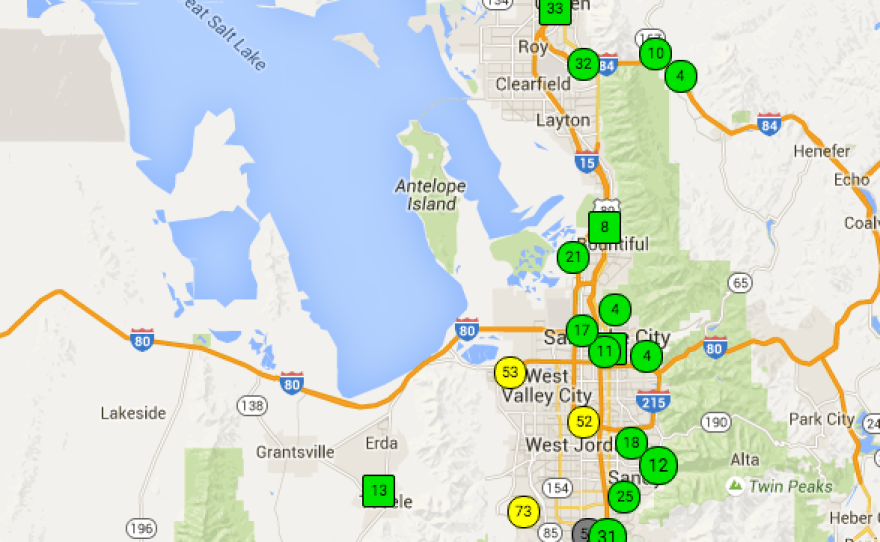The fight over dust from a Salt Lake Valley gravel pit has produced a new network of air-quality monitors all along the Wasatch Front.
Amy Allen and Adrian Dybwad set up their first homemade pollution sensors last fall because the state’s official monitors were miles away from their home. Now purpleair.org has a network of 21 sensors from Springville to Morgan County. Allen says many of their pollution readings are higher than the state’s.
“We have seen some difference,” she says. “I think one of the basic reasons for the difference is the kind of monitors they’re using for their real-time data. They’re hourly averaged. Ours are every few seconds.”
Plus, the different technologies and methods being used create what’s, in effect, different scales for looking at air quality, an apples to oranges comparison.
At least for now.
The two are still testing and calibrating their system. And they’ve talked to state regulators and consulted Kerry Kelly, vice chair of the state Air Quality Board and a University of Utah chemical engineering professor who studies air pollution.
Kelly describes the new network as an exciting trend in citizen science.
“Purple air and these types of sensor networks are powerful and very promising tools,” she says. “But you really have to take the results with a grain of salt and understand what they are good for – they’re good for trends, for identifying hotspots.”
The state’s air monitoring system is dictated by federal standards and checked by the U.S. Environmental Protection Agency. And Kelly says calibrating the monitors to local weather conditions is complicated.
Dybwad says the monitors cost about $70 apiece, and they empower users with valuable information about the air they’re breathing.
“If it’s a revolution,” he says, “I hope the revolution will be that we make some changes, that we clean up the air a bit, that we make people all over the country realize they can do something if they get involved.”
Hundreds of thousands of Utahns fall into groups considered especially vulnerable to poor air quality, and someday monitoring like this could become a valuable tool for managing personal health everywhere.








